Monday Morning Update 10/31/11
From What About Bob?: “Re: HIT Stack Exchange. Took a year to get enough people to commit, now we need the masses to ask and answer questions so the site can survive. Give us nerds some love.” HIT nerds or nerd-wannabes should take a look.
From Orlando Cepeda: “Re: Dr. HITECH’s Rainbow Button Initiative Rap. Lyrics are here.” Ross did great with these. Here’s a section where he lyrically explains the VA’s Blue Button medical record download:
I been to far-off lands, tryin’ to do what’s right, I had dreams and plans, when I got caught in a firefight.
Now back in the states, I’m a wounded warrior, all my doctors are great, but sometimes I ain’t sure,
Exactly how to keep it straight, or know just how to navigate, all my meds and lab results, and how they relate,
But now I push the Blue Button, and it’s all there to see, just a click of the mouse, and it all comes to me.
And it’s not just for this vet, heck that ain’t nuttin’, just see what stuff *you* get, when you hit the Blue Button.
From Arcturus: “Re: exposure. You recently mentioned our company on HIStalk. We got several inquiries from companies wanting to be a VAR for us, several VCs inquired, and it caused some buzz. Very much appreciate your doing this.” My pleasure. If I’ve heard about something and it interests me, I’ll almost always mention it. It does get a bit tough when companies try to press me to write about them and (a) I don’t find their product or service all that interesting, or (b) I’m too busy. People sometimes forget that HIStalk is an after-work thing for me, meaning I can’t chat on the telephone during hospital working hours and I’m not usually willing to give up some of my handful of free hours each week to watch a demo or comment on a white paper, especially if it’s a company or person I’ve never heard of.
Three-quarters of respondents say it’s silly for docs to be required to crank out engaging, unique narrative for every repetitive patient encounter, but a fourth don’t want HHS paying for encounters described in boilerplate. New poll to your right: can healthcare reform’s needed improvements in cost and quality be realized with today’s IT systems?
My Time Capsule editorial from 2006: Misys Lesson: Mama, Don’t Let Your Vendors Grow Up to Be Conglomerates. I don’t like to show paternal favoritism toward my editorial offspring, but I admit this is one of my favorites, with hyper-caffeinated ramblings like, “Why did a British financial software company get into the US healthcare IT market in the first place? Well, let’s just say it wasn’t a noble desire to better humankind. From their Web site, ‘The main objectives were to reduce the Group’s exposure to a single market (insurance) and to increase its size in an already consolidating software sector.’ That’s about as unemotional as an accountant’s nimble calculator fingers determining the net present value of three dinners with Myra the secretary vs. the potential passion-filled payout.”
Unrelated (mostly, anyway – it does involve exercise and personal motivation) but for a guaranteed Monday morning smile, check out this brilliant commercial for Contrex mineral water, which I can’t get out of my head. I know Inga will like it.
The merry pranksters at Epic put up a Halloween-inspired Web page that includes interactive spider-smashing. I’m sure it will be gone after Monday, so last call.
Encore Health Resources announces that Joe Boyd has replaced co-founder Ivo Nelson as board chair. Boyd has been advising the company for the past 18 months and has worked with Ivo and CEO Dana Sellers before at Healthlink, where Joe was board chair, Dana was president and COO, and Ivo was CEO until they sold the company to IBM in 2005. Encore has been quickly ramping up revenue and headcount and was named the #2 best HIT advisory firm by KLAS. Ivo will remain on the board.
Coincidentally, I’d been thinking for several days about something Ivo told me in my 2009 interview, reminded of it while reading the Steve Jobs biography:
This is nothing more than me doing what I love to do. If it leaves a legacy, I think that’s OK, but I’m not sure what you really get out of that. When I’m hopefully up in my 80s or 90s and I pass away, the people that are going to come to my funeral are going to be my family. It’s not going to be clients. It’s going to be people that are close to me personally in my personal life, my kids and my sisters and a handful of friends probably that I have. That’s a legacy. You say, "What kind of legacy would I want to leave?" and it would be a legacy that’s more related to being a good father to my children and being a good husband to my wife. That kind of stuff. Not anything I do professionally.
Inga encroaches on Weird News Andy air space in summarizing this story as, “I guess the guy wanted the doctor to give him a hand.” A homeless man with a history of mental problems rushes into a urologist’s office gushing blood, saying he had just accidentally chopped off his arm on a homemade guillotine. Nurses call 911 (probably the best course of action for a urology practice dealing with an amputation,) and when police check out his wooded camp, they find a huge guillotine built from scavenged timber, along with his recently severed arm. One world-weary police officer observed, “My goodness, a lot of thought went into this.” One can only imagine the intended purpose of his handiwork given that his self-amputation was accidental.
Vince’s HIS-tory covers a company I’m not familiar with: Computer Synergy. He says its product was so progressive that its still running in dozens of hospitals and its successor firm was just acquired a few months ago, with details coming next time.
Shareable Ink CEO Stephen Hau is named Innovator of the Year by the Nashville Technology Council. They haven’t posted pictures of the winners yet, so I’ll go with a company team lunch pic that I found on Facebook, with Stephen on the right.
CHIME Foundation gives Allscripts CEO Glen Tullman its 2011 Lifetime Achievement Award.
Omaha-based transplant systems vendor HKS Medical Information Systems is acquired by an investment group led by Argenta Partners LLP. Louis Halperin is named CEO and Paul Markham COO.
AventuraHQ names neurosurgeon and venture partner Teo Dagi MD as CMO. How about these educational credentials: Columbia undergrad, Hopkins MD/MPH, Harvard MTS, Wharton MBA, Queens University DMedSc. I profiled Aventura, which offers a virtual desktop for efficient clinician access, in July.
Small hospital systems vendor CPSI announces Q3 numbers: revenue up 2.8%, EPS $0.54 vs. $0.45, missing expectations by quite a bit and falling short of previous guidance. System sales were down, which is not exactly cheery news knowing that the HITECH effect is close to peaking. Shares were hammered, taking a 28.5% haircut at Friday’s close as the Nasdaq’s biggest percentage loser by far. Above is the one-year chart of CPSI (blue, straight vertical line on the right) compared to the Nasdaq (red) and S&P 500 (green). The stock had been climbing nicely, but tanked enough in a single day to barely put it above the indices for the year. Market cap is $564 million.
Speaking of stock, shares in MedAssets jumped 14% Friday, with an analyst attributing “weakness across the rest of the health IT group” that includes Cerner, Quality Systems, and CPSI. Michael Cherny of Deutsche Bank Securities says MedAssets “has no exposure to electronic health records” like those previously mentioned EHR vendors whose earnings reports this week were “disappointing” or “confusing.” That may just be a reaction, however, since after-hours trading shows MedAssets, which reports earnings Thursday, giving back the full amount of its Friday gains. And while MDAS shares had a nice Friday, the past 12 months haven’t been nearly as kind, with shares down 40%. The one-year share price graph shows compares MedAssets (blue), Cerner (green), and Quality Systems (red).
The Rockford, IL paper covers the HITECH status of local hospitals. OSF Saint Anthony uses Epic and has been paid $2.5 million in MU money. SwedishAmerican, with Meditech and Epic, has earned $7.5 million for the hospital and $4.5 million for physician practices. Rockford Health is installing Epic in its practices and hospital and will attest in 2012 and 2013, respectively.
For my techie brothers and sisters: Tom Munnecke (software architect, VistA) has an after-dinner chat with Ward Cunningham (inventor of the wiki) and Ralph Johnson (computer science professor and author) on the subject of “refactoring",” specifically with regard to VistA. Tom’s iPhone made a darned nice video with good audio. It’s kind of like Live from Daryl’s House for geeks. I got myself thinking about my techie sisters reference – nothing’s more attractive than a smart, cynical female programmer, of which there are sadly too few.
Meaningful Use and Beyond, a book by Fred Trotter (healthcare open source expert) and David Uhlman (CEO of open source EMR vendor ClearHealth), is published by O’Reilly.
The Federal Trade Commission will require the parent company of prescription data vendor IMS Health to sell two product lines of its acquisition target SDI Health to receive FTC’s approval for the sale to occur. SDI’s tools for promotional audits (estimates drug marketing costs) and medical audits (analyzes physician prescribing by condition) would give IMS Health a monopoly, according to the complaint by FTC, which must approve the buyer of the two product lines.
I feel like a Facebook stalker for posting this, but I will anyway. I noticed a “Like” for a recent post from Mark Work, IT director at ProMedica Health System in Toledo. Checked out his info, it linked to a site for Madison Avenue Band, a ten-piece cover band with horn section and no computers (thank goodness.) Check the video above – these guys (including Mark, I assume – looks like him on keyboard, but I’m not sure) are real-deal rockers. Check out this smokin’ version of “Vehicle” and here of “Wild Nights.” Not only do I love the music, Mark’s Facebook pics are a trove of cool 70s music history – Foghat, Uriah Heep, ELP, Queen, Foreigner, Heart, Styx, and Yes. Well worth my half hour to watch the videos and check out the pics. My arms are tired from air-drumming.
Cisco CEO John Chambers and the King of Jordan launch the Jordan ICT Task Force, which will promote Jordan’s HIT vendors.
GetWellNetwork is named Emerging Business of the Year by the Montgomery County (MD) Chamber of Commerce, which featured the company in a three-minute overview video.
A state-mandated Web site that allows Ohio consumers to compare hospital performance is apparently going down the tubes. The Ohio Hospital Association is supporting a bill that would eliminate the requirement that hospitals provide their data for the Ohio Hospital Compare site, saying they already send the same data to CMS’s Hospital Compare site that anyone can use.
Texas Health Resources runs an ad campaign around its use of AirStrip Cardiology that includes billboards (“Now Your EKG Gets Here Before You Do”) and TV commercials (above).
Merge Healthcare says 11 radiology practices have bought its RIS v7.0 to achieve Meaningful Use. One of its customers brings up the Complete vs. Modular HER issue, saying, “If you utilize a modular system, you as the provider, the onus is on you to find another product or combination of products that meet the remaining criteria before you can claim to be using a certified EHR and qualify for MU funds.”
Chiropractors are getting their HITECH payments, too.
Medtronic hires Symantec to assess the security of its insulin pumps after a McAfee team demonstrates how a hacker could control them from up to 300 feet away.
In England, a terminally ill, mostly blind 14-year-old boy has his iPad stolen from his hospital bedside, which had been donated my Make-A-Wish Foundation so that he could enjoy it for the short time until he goes fully blind. All is well, however – a local supermarket was touched and bought him a replacement, with his reaction to it pictured above.
A new poll finds that only 34% of Americans like the Affordable Care Act, while 51% view it unfavorably, the worst numbers since it was introduced last spring.
A Massachusetts court dismisses a lawsuit against Tufts Medical Center, sued by a patient who claimed their faxing of her hysterectomy surgery records to her employer’s fax machine violated her privacy because co-workers read them. The patient had given the doctor instructions to send the records there, but still feels her lawsuit was justified.
















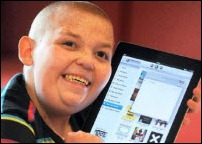






















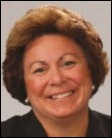




























































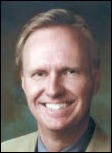










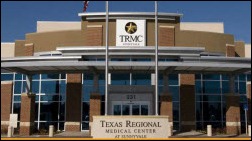

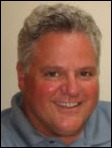


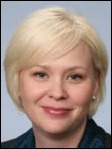



"most people just go to Epic" that's a problem because then EPIC becomes a monopoly in healthcare, if it isn't…